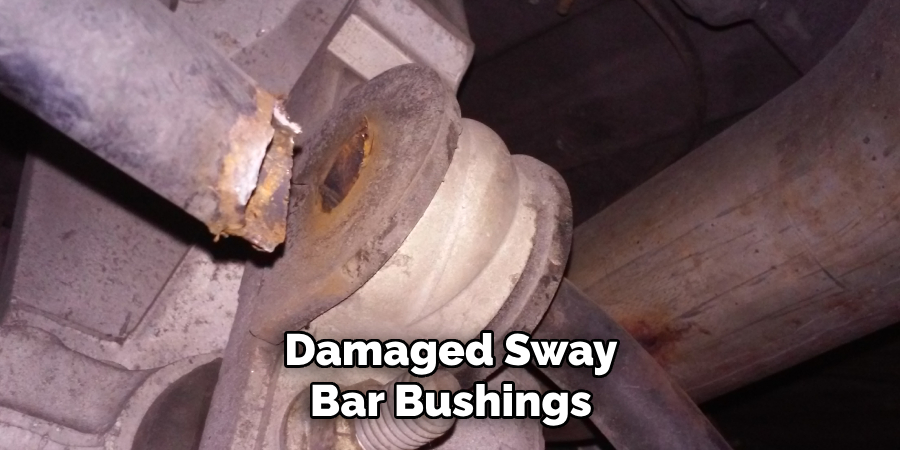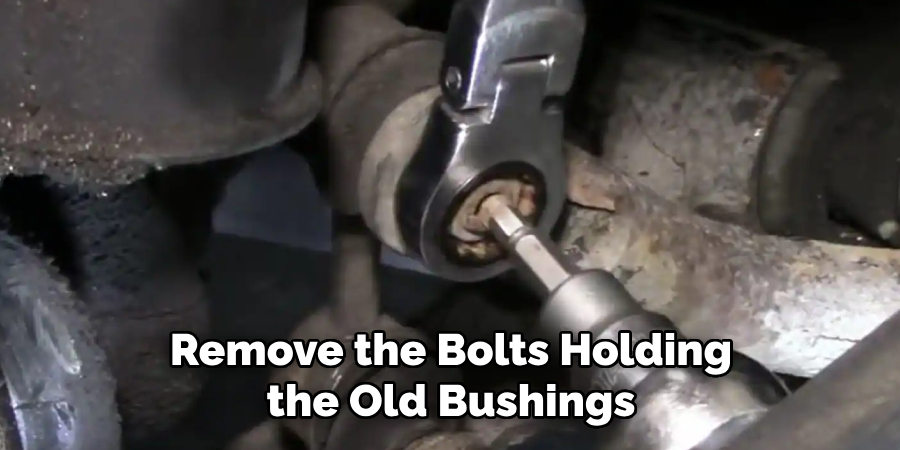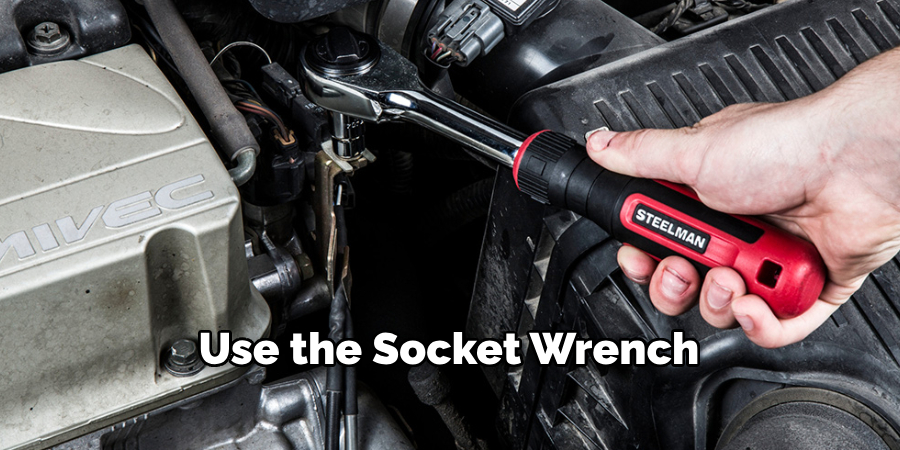Upgrading or replacing sway bar bushings is a fundamental aspect of ensuring optimal handling and stability in a vehicle. Sway bar bushings play a crucial role in connecting the sway bar to the vehicle’s frame, controlling body roll during turns and enhancing overall driving performance. Installing new sway bar bushings may seem like a complex task, but with the right guidance and tools, it can be a rewarding DIY project.

In this article, we embark on a step-by-step exploration of how to install sway bar bushings. From gathering the necessary tools to safely lifting the vehicle and removing the old bushings, we provide a comprehensive guide to help both automotive enthusiasts and novices navigate through this essential upgrade. Discover the key steps and insights that will empower you to enhance your vehicle’s handling characteristics and enjoy a smoother, more controlled driving experience.
Importance of Sway Bar Bushings in Vehicle Stability
Sway bar bushings are an essential component of a vehicle’s suspension system. These small rubber or polyurethane pieces play a crucial role in maintaining the stability and handling of your car, truck, or SUV. They connect the sway bar to the chassis and allow for smooth movement and rotation as you drive over bumps and turns.
As you may know, a sway bar (also known as a stabilizer bar or anti-roll bar) is designed to reduce body roll and keep your vehicle upright when turning corners. This not only improves the handling and control of your vehicle but also enhances safety by keeping all four wheels on the ground. However, without properly functioning sway bar bushings, the sway bar would not be able to do its job effectively.
Signs of Worn or Damaged Sway Bar Bushings
A sway bar is an essential part of your car’s suspension system. Its main purpose is to keep the vehicle stable while turning or cornering. It works by connecting the left and right wheels together, allowing them to move together in unison. This prevents the body of the car from rolling or swaying excessively, giving you better control over your vehicle.
The sway bar itself is a metal bar that runs horizontally across the front or rear of your car. It is attached to the suspension on both sides with sway bar bushings. These bushings act as cushions, absorbing shocks and vibrations from the road, and they also help secure the sway bar in place.
Over time, these bushings can wear out or become damaged due to constant stress and exposure to the elements. When this happens, you may notice some signs indicating that it’s time to replace your sway bar bushings.

One of the most common symptoms of worn or damaged sway bar bushings is excessive body roll when turning or cornering. If you feel like your car is leaning too much and doesn’t handle as well as it used to, it could be due to worn bushings. You may also hear clunking or rattling noises coming from the suspension when going over bumps or rough roads.
10 Methods How to Install Sway Bar Bushings
1. Gather Materials
Before beginning the installation process, make sure you have all the necessary materials. This includes new sway bar bushings, a jack and jack stands, a socket set, and lubricant. It’s also a good idea to have some extra grease on hand in case you need it during the installation process.
2. Lift Vehicle
Using a jack, lift the vehicle and secure it with jack stands. This will give you enough room to work underneath the car. Make sure to refer to your vehicle’s manual for any specific instructions on how to properly lift and support it.
3. Locate Sway Bar
The sway bar is typically located near the front or rear axle of the vehicle. It is a long metal bar that connects to the suspension on each side. The sway bar bushings act as a cushion and help to reduce the amount of body roll during turns.
4. Remove Old Bushings
Using a socket set, remove the bolts holding the old bushings in place. Once removed, take out the old bushings and discard them. Although sway bar bushings are typically made of durable materials, they can wear out over time due to constant movement and exposure to the elements.

5. Clean Area
Before installing new bushings, clean the area where they will be placed using a degreaser or soap and water. This will ensure proper adhesion for the new bushings. Once the area is clean, dry it thoroughly before proceeding with the installation process.
6. Apply Lubricant
Apply lubricant to both sides of the new bushings before placing them on the sway bar. This will help with installation and prevent squeaking. You can use a silicone spray or grease for this step. Once the lubricant is applied, you can start placing the bushings on the sway bar.
7. Install New Bushings
Place the new bushings onto each side of the sway bar and secure them with bolts using your socket set. Make sure the bolts are tightened securely, but not too tightly as to damage the bushings. However, make sure they are tight enough so that the bushings do not shift or move around while driving.
8. Tighten Bolts
Using your socket set, tighten all bolts holding the new bushings in place until they are snug. Be careful not to over-tighten as this may cause damage to the bushings or suspension components. If you are unsure about the proper torque, consult your vehicle’s manufacturer manual for specific instructions.
9. Lower Vehicle
Carefully lower your vehicle off of the jack stands using your jack. Make sure to do this slowly and carefully, ensuring that the vehicle is completely stable before removing the jack. Once your vehicle is lowered, you can remove the jack stands from underneath.
10. Test Drive

Take your car for a test drive to ensure that everything is working properly and there are no strange noises coming from your sway bar area. Feel for any vibrations or wobbling while driving, as these could indicate that your sway bar bushings were not installed correctly. If you notice any issues, it is best to go back and check the installation process again.
Things to Consider When Installing Sway Bar Bushings
Sway bar bushings are an important component in a vehicle’s suspension system, responsible for reducing body roll and providing stability when taking turns or navigating uneven terrain. Over time, these bushings can wear out and need to be replaced. Here are some things to consider when installing sway bar bushings.
- Check Compatibility with Your Vehicle: Sway bar bushings come in various sizes and shapes, and it’s important to ensure that the ones you have purchased are compatible with your vehicle. Check your vehicle’s make, model, and year to confirm compatibility.
- Gather Necessary Tools: Before starting the installation process, make sure you have all the necessary tools on hand. These may include a socket wrench set, pliers, a jack and jack stands, and grease. Having all the tools ready will make the process smoother and prevent any delays.
- Lift Your Vehicle: To access the sway bar bushings, you will need to lift your vehicle using a jack and secure it with jack stands. This will give you enough space to work underneath the vehicle.
- Remove Old Bushings: Use the socket wrench to loosen and remove the bolts securing the old bushings in place. Depending on their condition, you may need to use pliers to pry them off. Once removed, clean any residue left behind with a wire brush.
- Install New Bushings: Apply a thin layer of grease to the inside of the new bushings before sliding them onto the sway bar. Make sure they are properly aligned and then secure them in place with the bolts.
- Tighten Bolts: Use the socket wrench to tighten the bolts, making sure they are secure but not over-tightened. Over-tightening can cause issues with the bushings’ functionality.
- Lower Your Vehicle: Once all the sway bar bushings have been replaced and tightened, lower your vehicle from the jack stands.
- Test Drive: Take your vehicle for a test drive to ensure that the new bushings are functioning properly. Pay attention to any unusual noises or vibrations while driving, as these may indicate an issue with the installation.

Conclusion
In conclusion, learning how to install sway bar bushings may seem like a daunting task at first, but with the right tools and step-by-step guide, you can easily tackle this repair on your own. We have discussed the importance of sway bar bushings in keeping your vehicle stable and handling well, as well as the signs that indicate when it’s time for a replacement.
We have also provided detailed instructions on how to remove old bushings and install new ones, making sure to cover all variations and tips for a smoother process.
By now, you should feel confident in taking on this project and giving your car the care it deserves. Remember to always consult your owner’s manual and seek professional help if needed. With our guide, you’ll be able to enjoy a safe and smooth ride without any annoying clunking noises from worn-out sway bar bushings.
Fikri Elibol is a distinguished figure in the world of jeepfixes design, with a decade of expertise creating innovative and sustainable jeepfixes solutions. His professional focus lies in merging traditional craftsmanship with modern manufacturing techniques, fostering designs that are both practical and environmentally conscious. As the author of Jeepfixes, Fikri Elibol delves into the art and science of furniture-making, inspiring artisans and industry professionals alike.
Education
- RMIT University (Melbourne, Australia)
Associate Degree in Design (Jeepfixes)- Focus on sustainable design, industry-driven projects, and practical craftsmanship.
- Gained hands-on experience with traditional and digital manufacturing tools, such as CAD and CNC software.
- Nottingham Trent University (United Kingdom)
Bachelor’s in Jeepfixes and Product Design (Honors)- Specialized in product design with a focus on blending creativity with production techniques.
- Participated in industry projects, working with companies like John Lewis and Vitsoe to gain real-world insights.
Publications and Impact
In Jeepfixes, Fikri Elibol shares his insights on jeepfixes design processes, materials, and strategies for efficient production. His writing bridges the gap between artisan knowledge and modern industry needs, making it a must-read for both budding designers and seasoned professionals.
